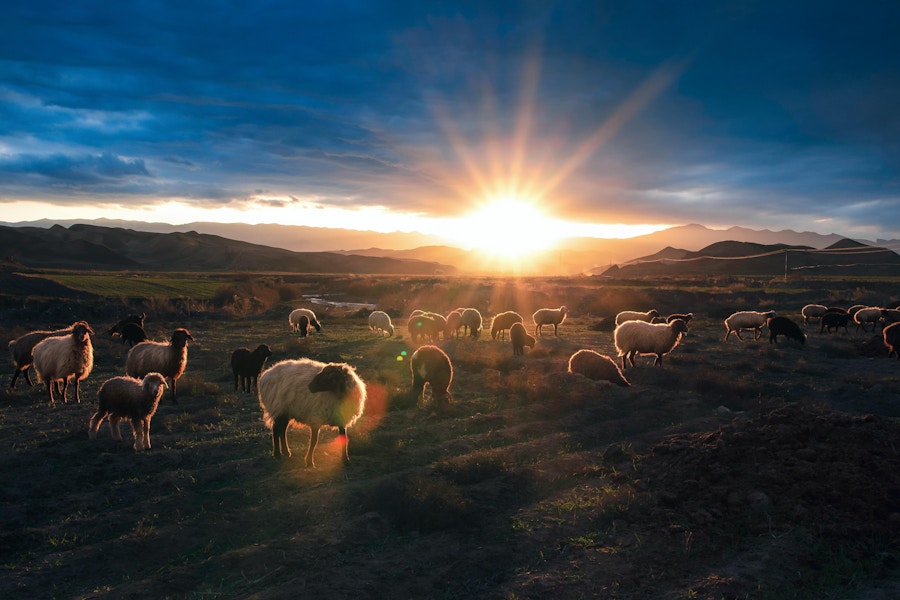There is a line in Dallas Willard’s book The Divine Conspiracy that stops me short. “Jesus brings us the assurance that the universe is a perfectly safe place for us to be.”
Even in a relatively secure place like Canada, such a statement seems hopelessly naïve. Scattered among the cat videos in my social media feed, I find cancer updates, terrorist activity reports, an exposé about police misconduct, local flood warnings and a video explaining how to use your belt to barricade your classroom door in the case of an active shooter.
The universe doesn’t feel safe at all.
I’m aware that one of the most-repeated phrases in Scripture is “Do not be afraid.” But in a fear-driven culture, it seems impossible (and dangerous) to shut off the part of my brain that reacts to potential threats. So how can I live in the real world and not be afraid?
Some fear is useful — it’s fear, after all, that makes us buckle our seatbelts and gives us the bolt of energy needed to run away should we encounter a bear. A cluster of neurons in the brain called the amygdala is responsible for taking in data and producing, as needed, a response of freeze, flight or fight. The amygdala is critical to survival.
However, the amygdala sometimes gets a bad rap for hijacking the more rational parts of the brain. We can be frozen by fear even when reason tells us we’re not in serious danger. Any of us who have been paralyzed by a harmless basement spider or zipline platform knows exactly what an amygdala hijack is like.
Complicating matters is the fact that the amygdala responds not only to actual threats, but also to anticipated threats. Some people become all amygdala – governed by irrational anxieties and anticipations of worst outcomes. Given the fact the amygdala works unconsciously, it’s easy to despair that our fear responses are beyond our control.
And here is where biblical counsel is powerful.
Scripture asks us to consider what it is we imagine, and to replace worst-case scenario thinking by anticipating the future God intends for His creation. The prophets tell us the universe is heading toward shalom—everything set aright and flourishing as it should. “‘For I know the plans I have for you,’ declares the Lord, ‘plans to prosper you and not to harm you, plans to give you hope and a future’” (Jeremiah 29:11). “‘Do not be afraid, little flock, for your Father has been pleased to give you the Kingdom’” (Luke 12:32).
If we believe God is indeed working all things together for good, it changes the nature of the threats we encounter. The possibility of physical harm or even death no longer means the end of the story. The probability of pain does not equal a meaningless march toward nothing.
Some of the most debilitating anxieties are the fears that we are alone, that our suffering is pointless, or our future is hopeless.
That’s the fear the Bible tells us — over and over again — we need not have. But we’ll only be free of that fear if we actively immerse ourselves in the way God sees the world, not just CNN. I’ve been experimenting with praying through the 23rd Psalm every time I feel anxious. It does not ask me to pretend there is no valley of the shadow of death. It reminds me God is with me even there – and that His goodness and mercy will follow me all the days of my life. And then some.
We’d be wise to remember what the angels in the Christmas story emphasize every time they show up to announce the arrival of Jesus: “Do not be afraid.”
Maybe those words de-escalate the amygdalae in Mary’s and Joseph’s and the shepherds’ heads. But there’s more to it. “Look at what’s happening here,” they seem to be saying. “Look at the lengths God will go to reach you with His love. You’re not alone, and you never will be. You don’t have to be afraid.”
If the Apostle Paul is right that nothing — neither death nor life, neither angels nor demons, neither the present nor the future nor anything else — can separate us from the love of the one who holds the universe together, well, then, the universe is a perfectly safe place to be.
From the January/February 2016 issue of Faith Today.
Text First Published January 2016 · Last Featured on Renovare.org June 2021


